Introduction of three varieties of Coffee the difference between the characteristics of Arabica Coffee Bean Robusta Liberica Coffee
There are three coffee varieties used for commercial cultivation in the world: small Arabica coffee, medium robusta coffee and large liberica coffee. What are the characteristics of each of these three coffee types?
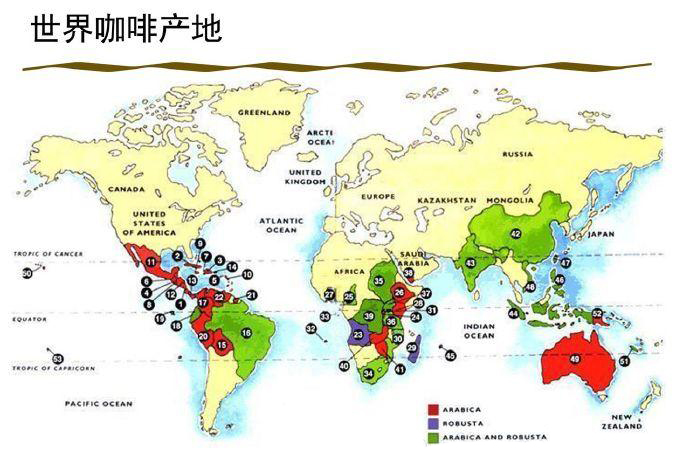
origin
Arabica coffee originated from the Ethiopian plateau and is now widely cultivated due to its excellent flavor quality, accounting for 70% of global coffee production. Like we usually hear iron pickup, bourbon, rose summer and so on belong to Arabica coffee species.
Arabica species are very sensitive to the requirements of the growing environment, so the suitable areas for Arabica coffee trees to grow are mostly located in the coffee belt with high mountains between the Tropic of Cancer. Arabica requires an altitude of 800-2000 meters for growth. The higher the altitude, the better the quality of coffee. Arabica coffee is currently the most widely distributed coffee variety, grown in Asia, Central and South America, and Africa. Countries such as Ethiopia, Kenya, Panama, Colombia and Brazil are famous Arabica coffee producers.

Robusta coffee species, in fact, should be strictly called Canefra species, Robusta is a subspecies of Canefra species that is widely cultivated, so Robusta has almost replaced Canefra as a synonym for this species. Robusta originated in the Congo (basin) area of West Africa and is widely cultivated because of its low altitude, high yield and easy cultivation. Its coffee production accounts for 20 -30% of global coffee production.
Due to Robusta's strong adaptability to the environment, it can grow luxuriantly at an altitude of 0--800m. Robusta's chlorogenic acid content is relatively high, about 7% to 10%, which is not easily affected by pests and climate. Generally, it is planted at a lower altitude and bears more fruits and faster. The main coffee producers are Brazil and Vietnam.
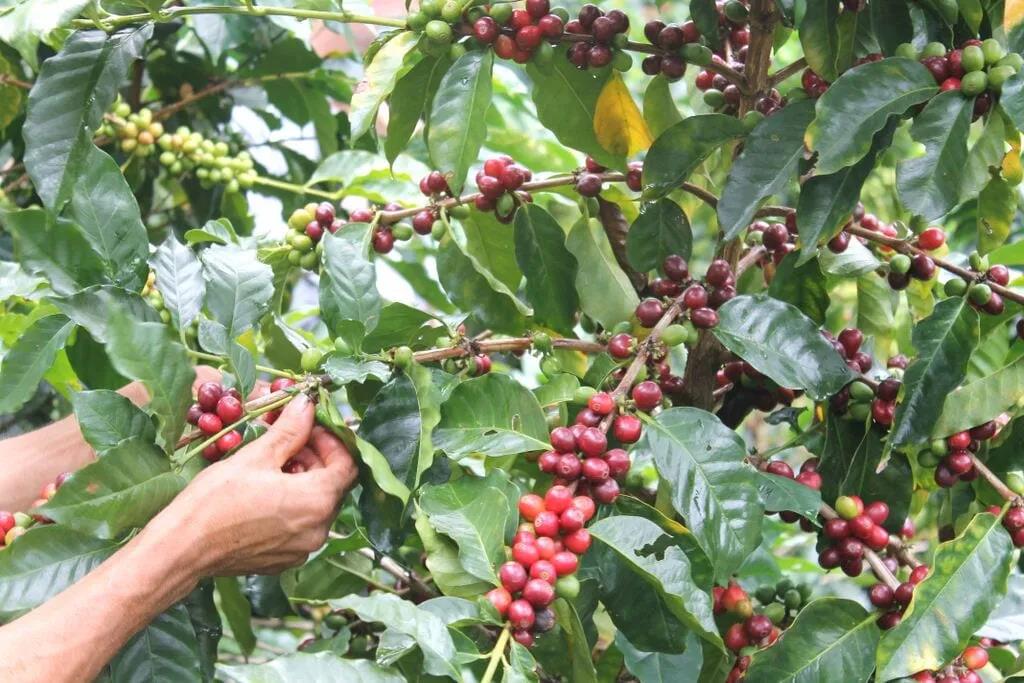
The large-grained Liberica coffee is native to the low-elevation forests of Liberia on the West African coast, hence its name. Because of its poor flavor and the difficulty of picking trees, the current cultivation scale is small, accounting for more than 2%-5% of global production.
Liberica coffee trees are much taller than Arabica or Robusta, reaching a height of 6-20 meters, and Liberica coffee nuts are also larger than the other two coffee species, so Liberica is also known as large seed. Currently cultivated mainly in Southeast Asia, the Philippines is currently the largest producer of Liberica coffee.
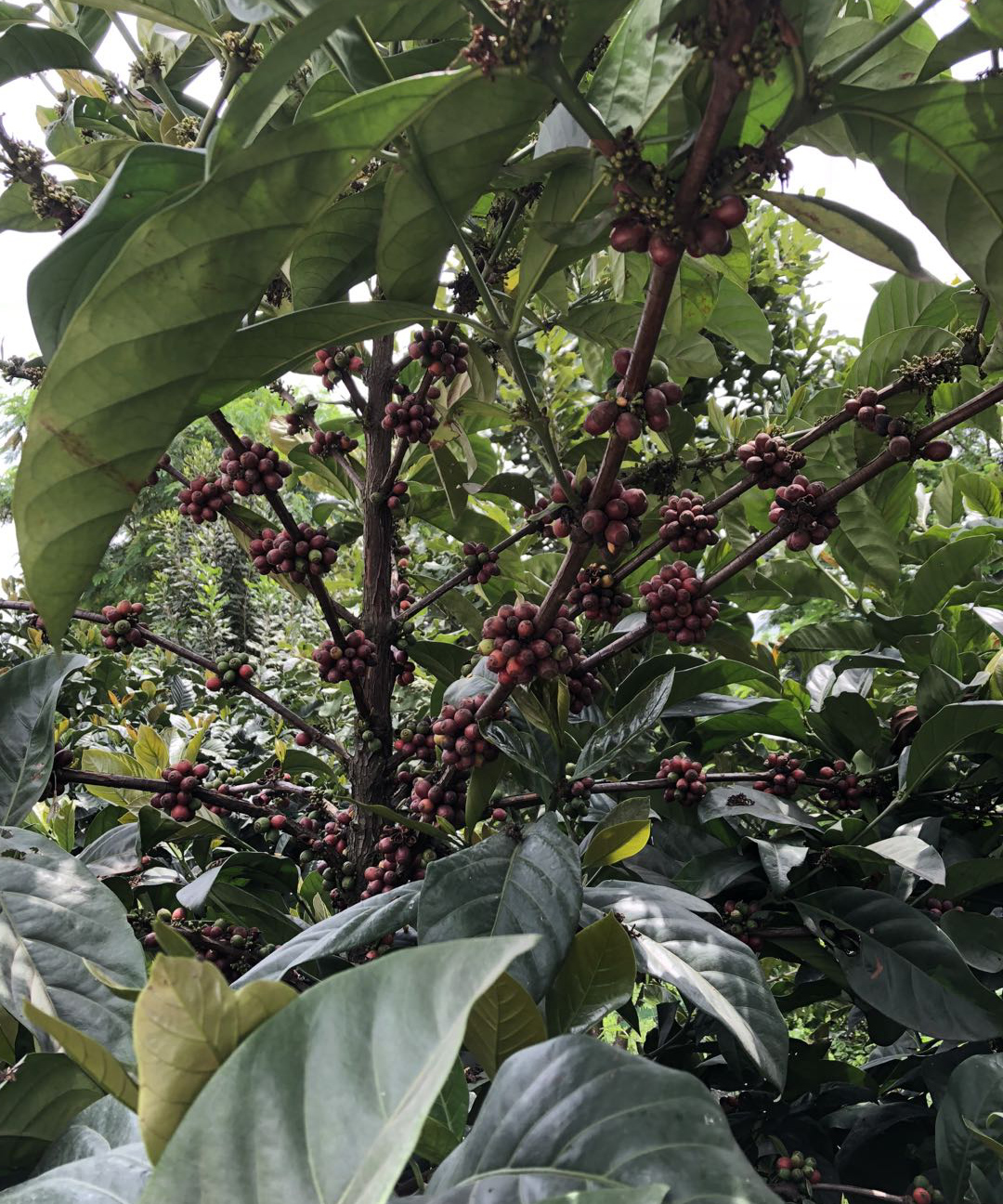
Morphology and flavor characteristics
Arabica coffee beans are oval in shape, slender and flat, with an "S"-shaped center line. Robusta's shape is round; the center line is "1" shaped, while Liberica's bean body is slender and pointed, similar to the shape of melon seeds, and the center line is also "1" shaped.
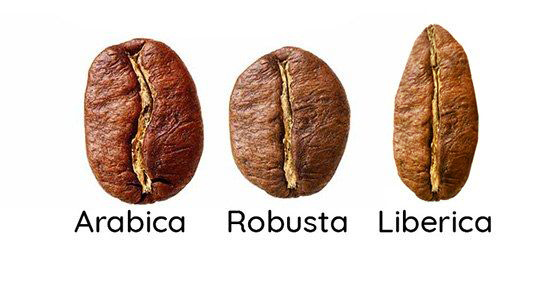
This way of identifying beans by appearance is more scientific in the state of coffee beans. However, because the beans will expand and deform after roasting, they will become round, and the center line will change from S shape to straight line, so it is more one-sided to identify beans by the shape of coffee cooked beans.
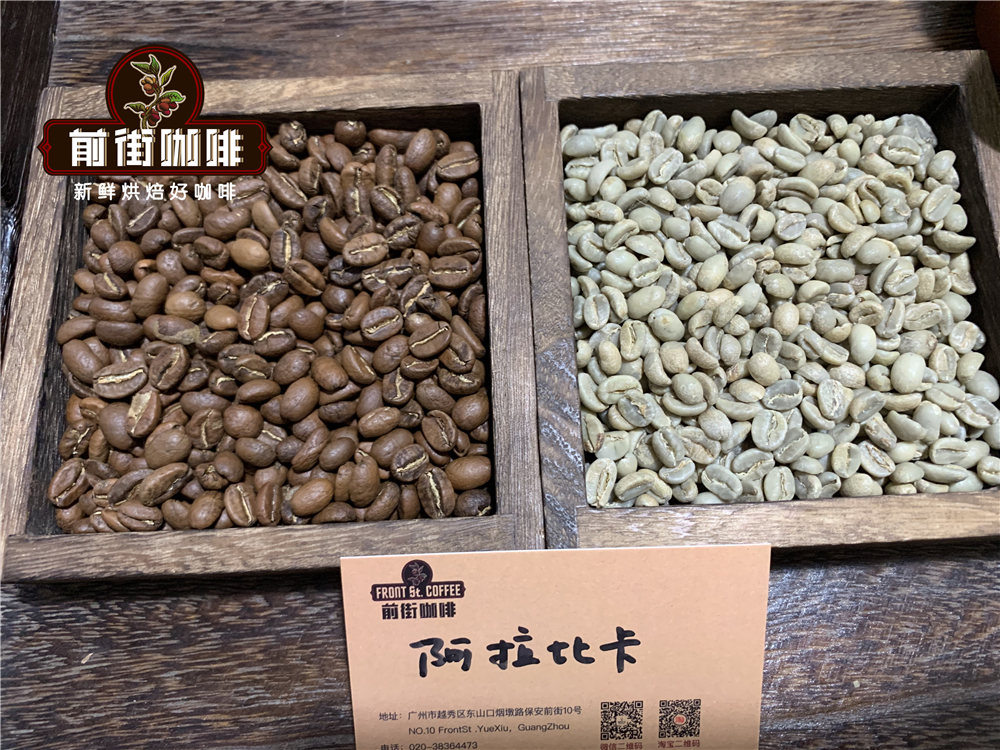
Arabica coffee beans are considered the best coffee beans in terms of flavor and have been used in the boutique coffee consumer market since the concept of boutique coffee emerged. Subspecies such as Arabica coffee have excellent acidity, high cup test scores, and excellent genes as the oldest coffee variety. And now in the fine coffee market no one knows the rose summer coffee species, but also with fresh flowers and comfortable acid to conquer the taste buds of coffee customers.
Robusta coffee is higher in caffeine, amino acids and chlorogenic acid than Arabica. Chlorogenic acid is the source of bitter taste, so Robusta naturally does not have the elegant aroma unique to Arabica beans. Instead, it has a richer and deeper taste. Coffee oil will be richer, and walnut, peanut, hazelnut, wheat, grain and other flavors will even appear pungent earthy flavor. It also benefits from Robusta's rich caffeine, which is generally used as an ingredient in instant coffee. Some Italian coffee blends will also add Robusta coffee beans in order to express rich coffee fat.

The flavor of Liberica coffee is also unpopular, with nutty, dark chocolate and smoky aromas dominating the notes. It is also difficult to accept because of the strong smoke. Some people even describe it as liquid tobacco because it produces a strong smoky taste and smell similar to the actual tobacco plant. Filipinos even call this coffee "Kape Barako", which translates to "strong coffee".

Of the three coffee varieties, Liberica has the lowest caffeine content. Robusta has the highest content, with 2.26 grams of caffeine per 100 grams of beans. Arabica coffee is second only to caffeine at 1.61 grams per 100 grams of beans. Liberica contains only 1.23 grams of caffeine per 100 grams of beans.
Liberica is also commonly used as a raw material for instant coffee, and in the Philippines,"Kape Barako" became a must-drink breakfast coffee for older generations. In Malaysia, Liberica beans are made into the local specialty, white coffee.
Important Notice :
前街咖啡 FrontStreet Coffee has moved to new addredd:
FrontStreet Coffee Address: 315,Donghua East Road,GuangZhou
Tel:020 38364473
- Prev
Hand brewed coffee brewing steps detailed illustration Hand brewed coffee brewing parameters Grinding powder water temperature ratio
The brewing time of a hand brewed coffee is also 2-3 minutes. In this short 3 minutes of brewing, there is no lack of sufficient preparation in advance and sweat on the back. There are many details that are rarely noticed. In this issue of barista development, we will share the steps of brewing coffee and the details of it. During the preparation phase, we always emphasize brewing techniques and brewing.
- Next
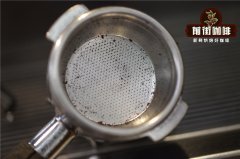
Italian semi-automatic coffee machine recoil cleaning steps how to clean the fully automatic coffee machine?
Italian coffee machine can be said to be the treasure of a coffee shop, as an important production equipment of the coffee shop, keeping clean and maintenance can make the coffee machine life longer, but also help to ensure the stability of the product. In this barista training note, let's share the cleaning guide for the espresso machine. Why does the coffee machine need to be cleaned? The range of cleaning that we may control includes the outside of the coffee machine.
Related
- Beginners will see the "Coffee pull flower" guide!
- What is the difference between ice blog purified milk and ordinary milk coffee?
- Why is the Philippines the largest producer of crops in Liberia?
- For coffee extraction, should the fine powder be retained?
- How does extracted espresso fill pressed powder? How much strength does it take to press the powder?
- How to make jasmine cold extract coffee? Is the jasmine + latte good?
- Will this little toy really make the coffee taste better? How does Lily Drip affect coffee extraction?
- Will the action of slapping the filter cup also affect coffee extraction?
- What's the difference between powder-to-water ratio and powder-to-liquid ratio?
- What is the Ethiopian local species? What does it have to do with Heirloom native species?

